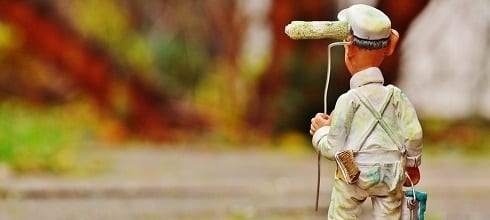


How Long Should We Wait Before Painting After New Drywall & Plaster Are Installed
December 4, 2019Tips for your family in the event of an earthquake, flood, forest fire, chemical spill or any type of disaster.
Making plans could save your family’s lives during a natural disaster. Gathering some household items, doing a bit of maintenance around your home and educating your family, can help you prepare your family for an emergency.
Are you prepared Check List
1. Best Way Out. Take a moment to imagine that there is an emergency, like a fire in your home, and you need to leave your home quickly. What are the best escape routes from your home? Find at least two ways out of each room. Now, write it down, you’ve got the beginning of a plan.
2. Know the emergency plans in your neighborhood – Find out where emergency shelters are located, identify the closest emergency services including police, fire, ambulance and hospitals and know your children’s schools emergency plans as well.
3. Arrange an out-of-the-area contact. Each family member should carry the contact phone number and address.
4. Teach Your Children -Tell your children how and when to call 9-1-1 or your local Emergency Medical Services number for help. Post other emergency telephone numbers by phones.
5. Make sure each family member knows how to shut off the utilities gas, electricity and water. (Don’t shut off the gas unless there is a leak or a fire. If the gas is turned off, don’t turn it on again… that must be done by a qualified technician).
6. Consider having one or more working fire extinguishers in your home. Many household fire extinguishers are “multipurpose” A-B-C models.
Get training from the fire department in how to use them. Also, extinguishers require routine care. Read your operator’s manual to find out how it should be inspected and serviced.
7. Keep a flashlight and battery operated radio near your bed.
8. Check if you have adequate insurance coverage. Make a complete inventory of your home. The inventory can be either written or videotaped. Include information such a serial numbers, make and model numbers, physical descriptions, and price of purchase (receipts, if possible).
9. Stash away a little cash for a true emergency-keep it in your disaster supplies kit in a safe and secure place at home so it is easy for you to access when you need it. This doesn’t need to be an overwhelming task. We pay bills every month, consider your emergency funds among your debts and put a few dollars away for the future.
10. Get your house ready… Move or secure objects that could fall and injure people or start a fire, such as a water heater, heavy furniture, lamps and bookcases. Move beds away from heavy mirrors and windows.
11. Tie down your water heater and other appliances that could break gas or water lines if they topple. Kits Available at hardware stores.
12. Install flexible pipefitting where possible (water supply lines, toilets & washers) to avoid gas or water leaks.
13. Keep at least a three-day supply of water per person (one gallon of water per person per day) if a disaster catches you without a stored supply of clean water, you can use the water in your hot-water tank, pipes and ice cubes. As a last resort, you can use water in the reservoir tank of your toilet (not the bowl).
14. Food – Keep a supply of non-perishable food handy, such as canned and dehydrated food, dried fruit, nuts and canned juices. Rotate periodically to keep them fresh. Remember a manual can opener.
15. First Aid – Have two first aid kits; keep a complete first aid kit in your home and car. Take a first aid and CPR class and be sure to post emergency telephone numbers (fire, police, ambulance) by the telephones.
16. Know what to do during an earthquake: DROP, COVER, and HOLD ON! If you are inside stay inside. Move away from windows, get under a heavy desk or table and hang on. If you are outside, find a clear spot away from buildings, trees, and power lines. Drop to the ground.
17. Short-term power outages, such as those caused by storms, are inconveniences but with good planning, you and those you care about will get through it just fine.
o Keep a flashlight and batteries handy for emergency lighting.
o Turn off electrical equipment you were using when the power went out.
o Avoid opening the refrigerator and freezer.
o Do not run a generator inside a home or garage.
o If you use a generator, connect the equipment you want to power directly to the outlets on the generator. Do not connect a generator to a home’s electrical system.
18. If a Winter Storm WARNING is issued…Avoid traveling by car, but if you must… Follow forecasts and be prepared when venturing out:
o Carry a Disaster Supplies Kit in the trunk and have extra blankets on hand.
o Keep your car’s gas tank full for emergency use and to keep the fuel line from freezing.
o Let someone know your destination, your route, and when you expect to arrive. If your car gets stuck along the way, help can be sent along your route.
19. After a disaster strikes, Do not call 911 for information (The system must be kept open for emergency calls). Listen to radio or television for news or instructions. Call your family contact. Do not use the telephone again unless it’s a life-threatening emergency.
20. Help a neighbour who may require special assistance — Infants, elderly people, and people with disabilities may require some extra help. People who care for them or who have large families may need additional assistance in emergency situations.

